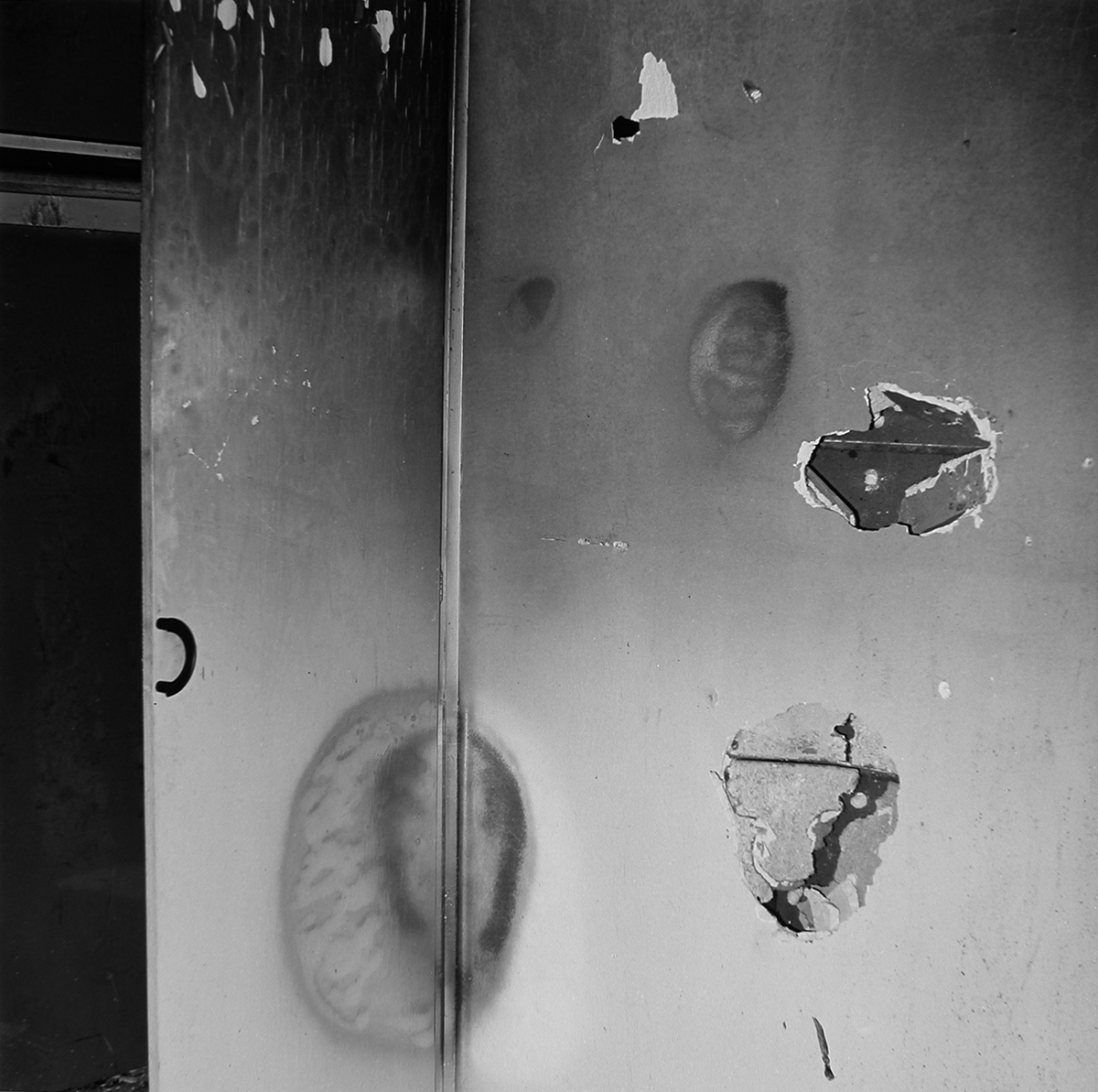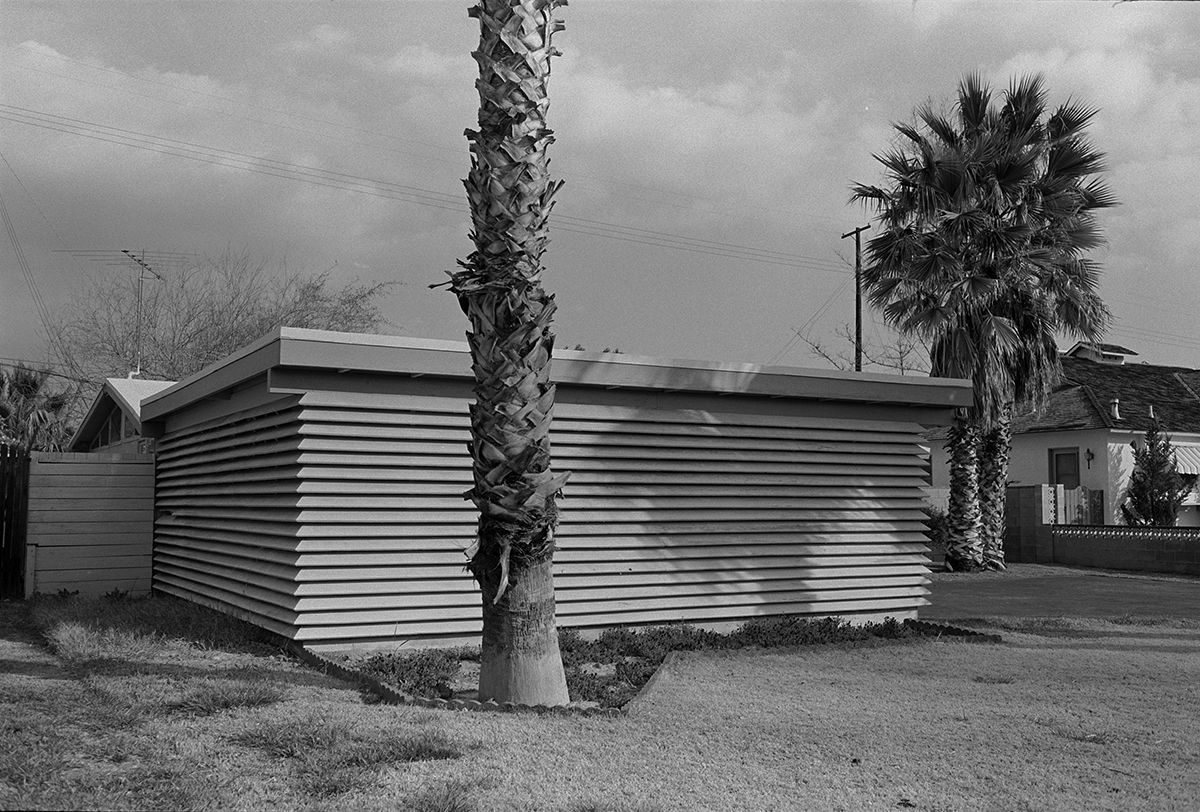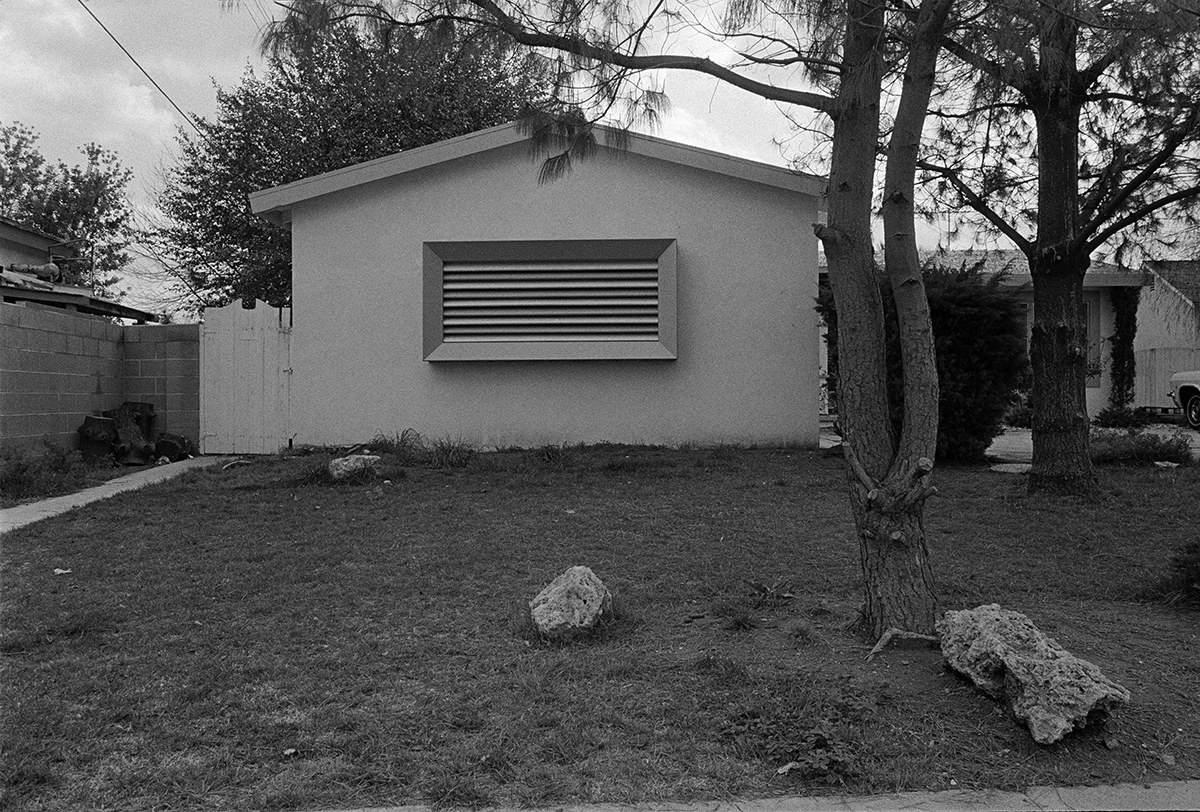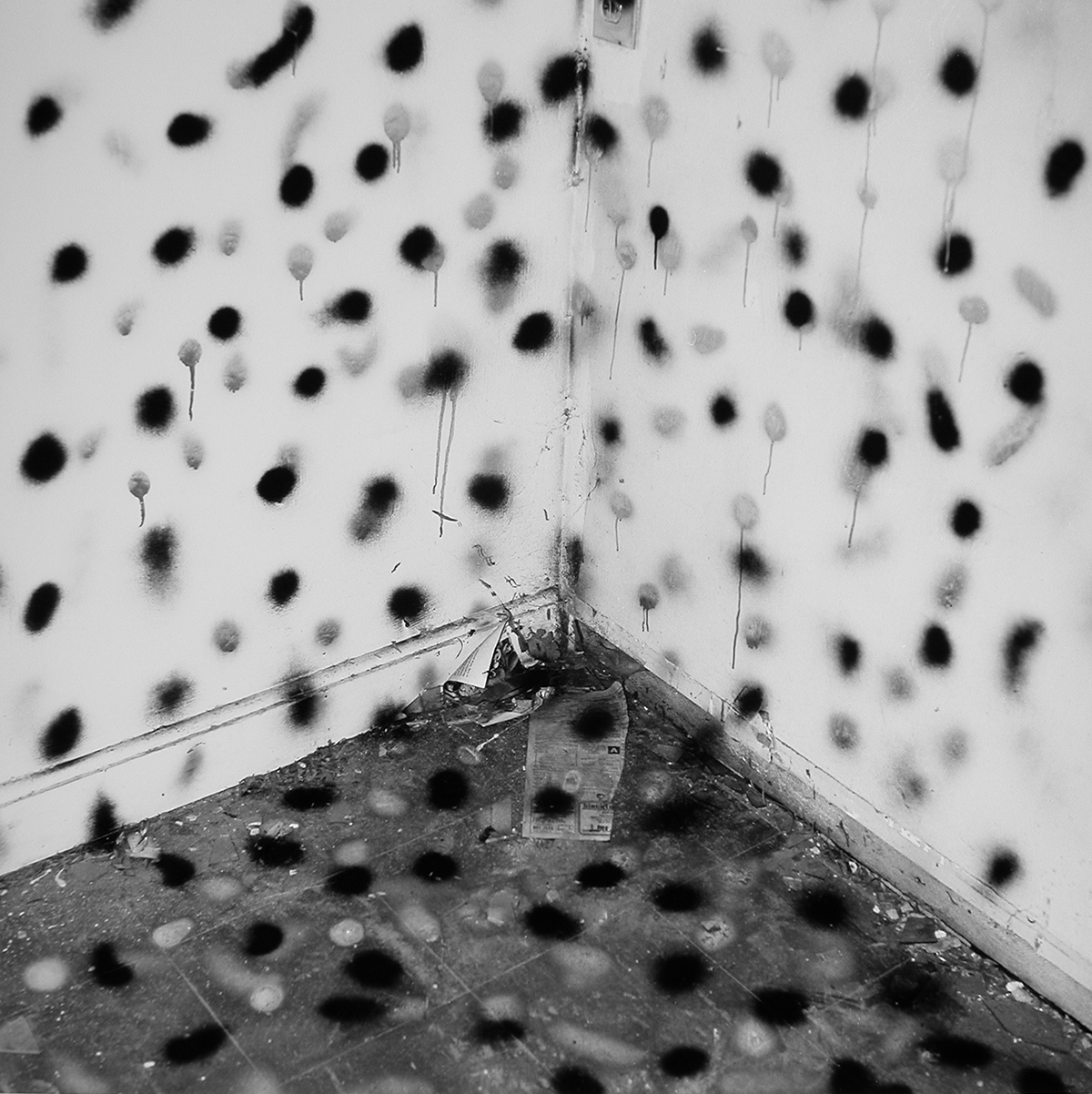John Divola - Vandalism
Text by Mark Rawlinson
Made in 1974–75, John Divola’s Vandalism series was a radical departure from San Fernando Valley (1971–73), his earlier series of photographs of the suburban neighbourhood Reseda, and the precursor to the more widely known Zuma series (1977–78). The contrast between the Reseda images of bushes, bungalows, and people watering their lawns and the smashed-up, graffitied interiors of abandoned houses in Vandalism is stark. At the time of its making, the San Fernando Valley series was well received, with critics reading the photographs as a commentary on the banality of the suburbs and the lives of those who lived there. However, this critical interpretation irked Divola. His interest was not in the photograph as metaphor or straightforward document, but rather in the more complex and puzzling set of issues and problems surrounding photography as process.


Given this preoccupation with process, it is not surprising that Vandalism was conceived and begun when Divola was studying on Robert Heinecken’s photography MFA at UCLA. Heinecken was a pivotal figure among the photographic community in Los Angeles, and had developed a highly experimental education programme. Although he emphasised traditional technical skill and the importance of photography’s histories, Heinecken encouraged his students to use this knowledge to break rules and to challenge conventional photographic practices. One victim of this irrepressible questioning of the medium was the camera itself, which students either abandoned or no longer used in the traditional sense. In what could be described as a radical gesture given the emphasis of the programme, Divola resisted the displacement of the camera and, throughout the Vandalism series, rescued and rehabilitated it.
Divola had become disenchanted with the work he was making at UCLA, so he returned to what he knew: the camera and the familiar neighbourhoods of Los Angeles. Just as he’d cycled around Reseda to find people and places to photograph, Divola sought out abandoned homes, places he would visit and revisit. With no studio space of his own, the rooms in these abandoned homes become sites of experimentation, where the rules and conventions of photography could be interrogated and made evident.
Inside these deserted houses, Divola found evidence of previous occupants and other visitors like him, all of whom had left marks: peeling layers of wallpaper, holes kicked in walls, smashed windows, footprints on dusty floors, and scrawled words and signs in paint. Divola began to make his own marks, initially in silver but then in black paint, and would then return (often days later) to make photographs. In the interim, others would sometimes have visited the houses, and the scene would have changed: new graffiti, newly broken doors and windows, more detritus strewn about. Importantly, the marks Divola made with paint were not the sole object of his attention. They were part of the act of intervening on and in the space, and held his attention no more than debris on the floor, or historical damage to the fabric of the structure.


Note how often Divola’s camera finds the corners of rooms, where floors and ceilings intersect with walls. Within the frame of the image, the effect is twofold. Firstly, it compositionally breaks the image into distinct planes, a nod to modernist formalism. Secondly, extending the reference to modernist flatness, the three-dimensional pull of a corner, its physical depth, is flattened by the photograph itself, the rendering of a three-dimensional space in a two-dimensional image. Resisting this flattening effect, though, are the painted marks themselves, which oscillate between that other modernist trope, the grid, and other repetitive gestural marks (circular, spiral, diagonal). These strokes and daubs seem dislocated or unrooted from the walls onto which they were painted, apparently floating free in a luminescent haze, a visual illusion that distorts the viewer’s vision and fools the eye. Such a self-evident defamiliarisation of the scene – what are we looking at? Who made these marks? Where is this place? – also makes obvious the performativity of the photographic process: the photograph is as constructed as the scene itself.


Divola’s hand is all over this work. There is no attempt to hide the making of the making of the image: the painterly vandalism, the physical inclusion of an arm or hand in the frame, the use of flashbulbs to exaggerate the light, which extends Divola’s painterly intrusions to include painting with light itself. Divola has described himself as a ‘spectre’ haunting his own work, but perhaps ‘poltergeist’ is a more apt term: a disruptive and unruly presence, known to break glass and leave unsettling ritualistic marks on frayed and decaying walls. Vandalism appears brutal in its straightforward creative destruction of each room in each abandoned house, but is simultaneously playful in the allusions to the history of photography that it draws from, and its relation to painting, conceptual practice, and performance.
Read more Photography+ Learn more about this artist



